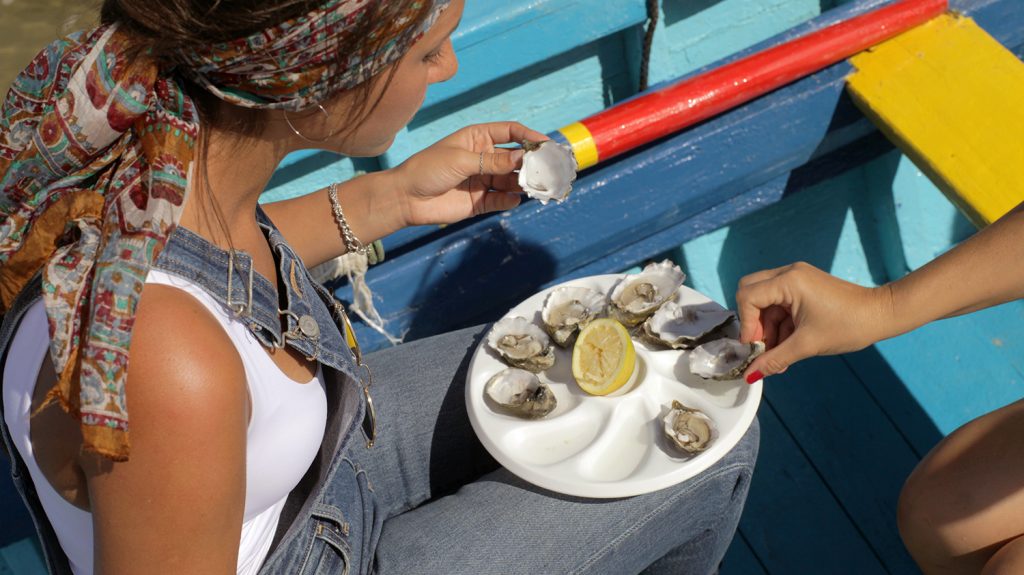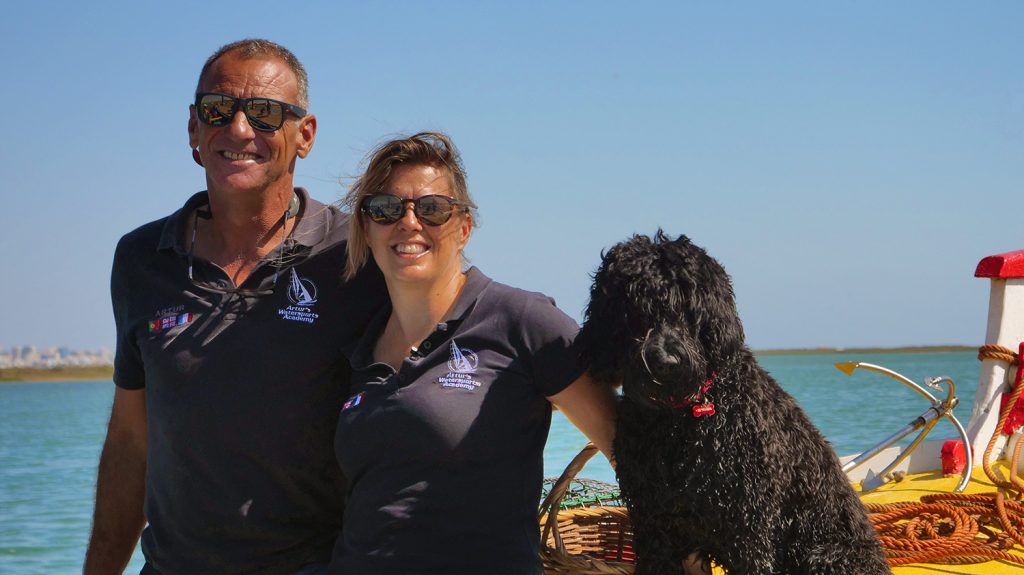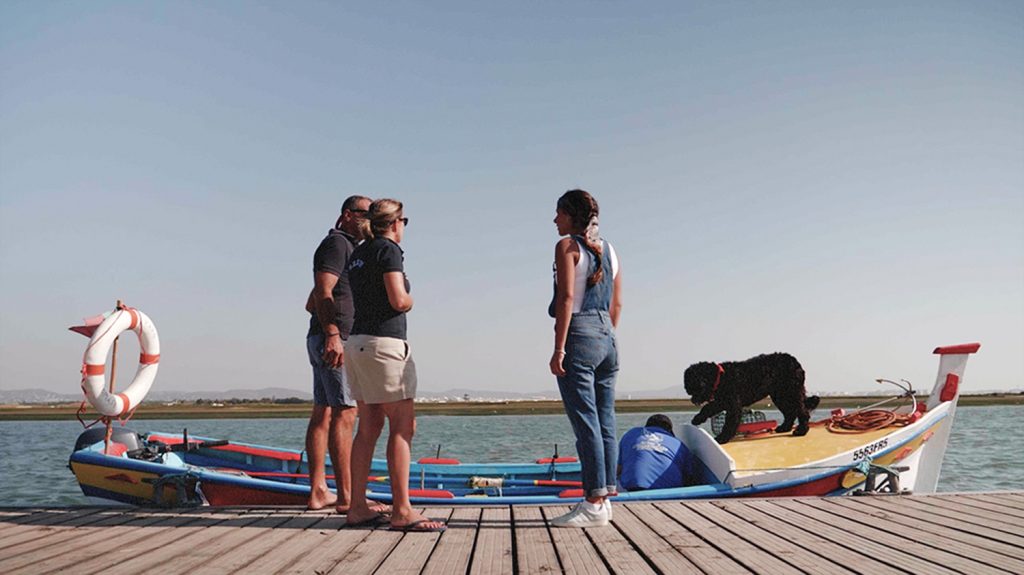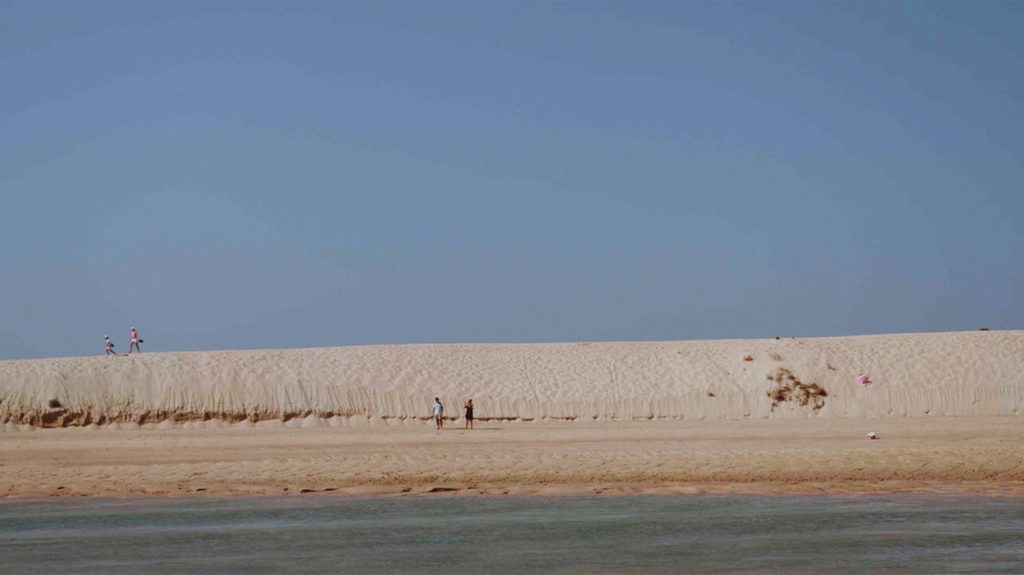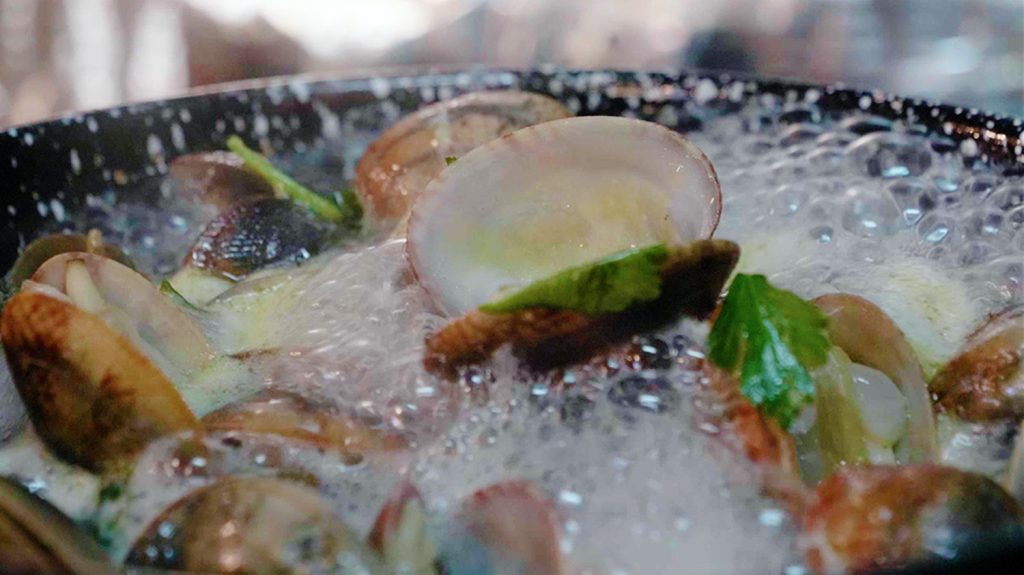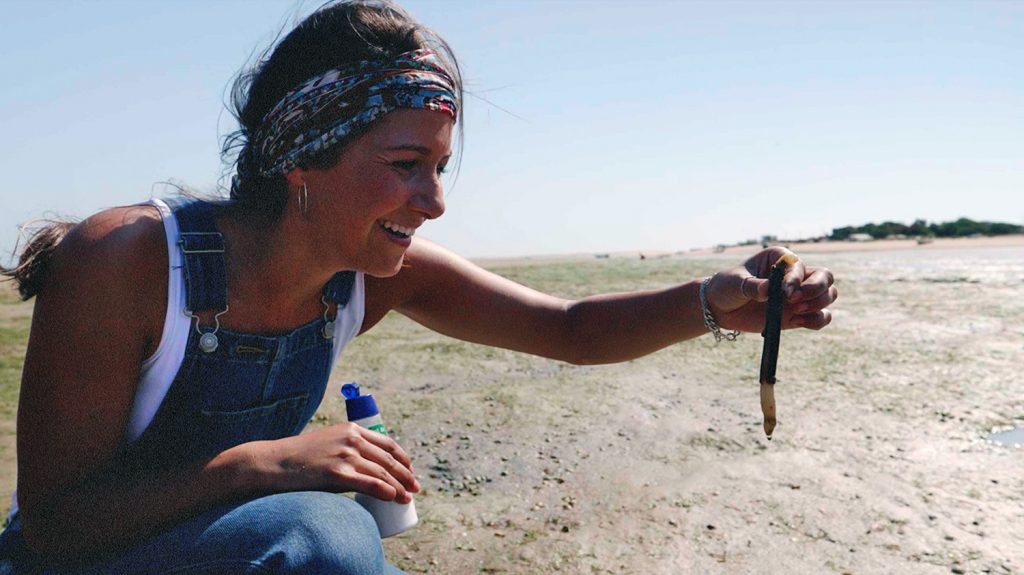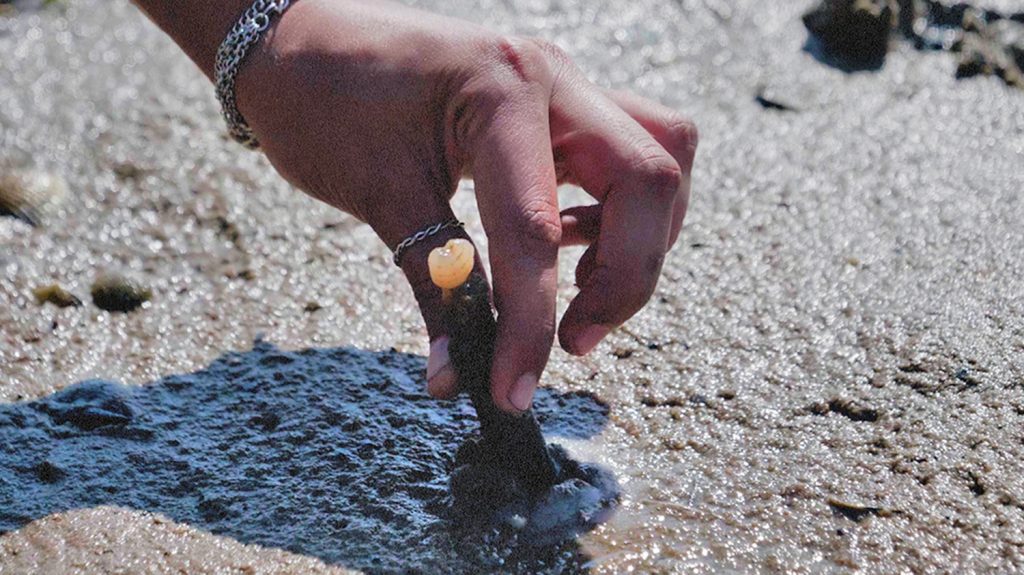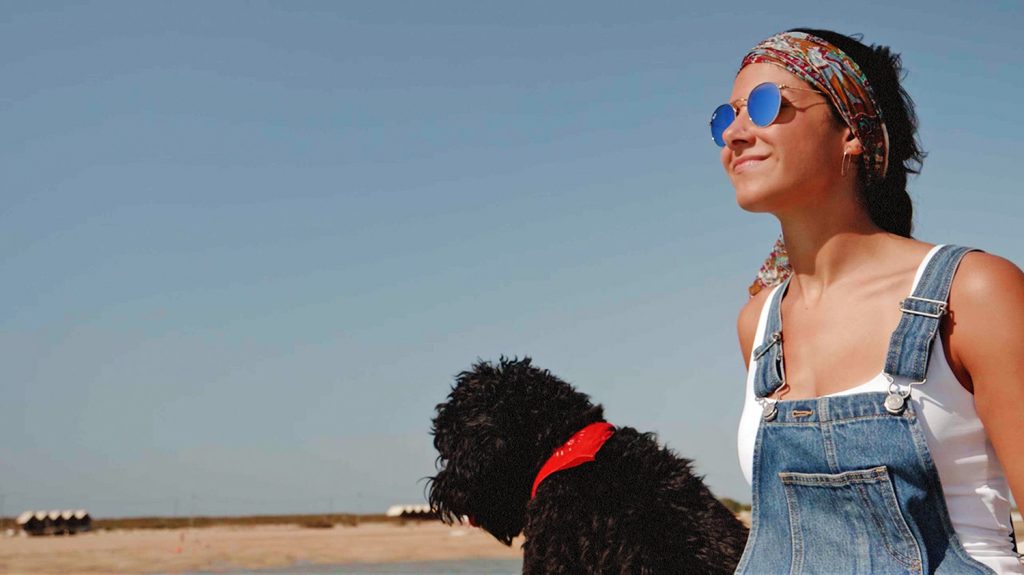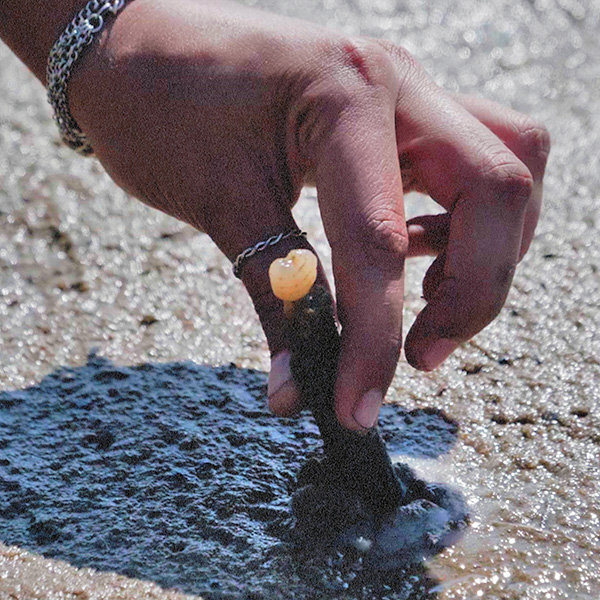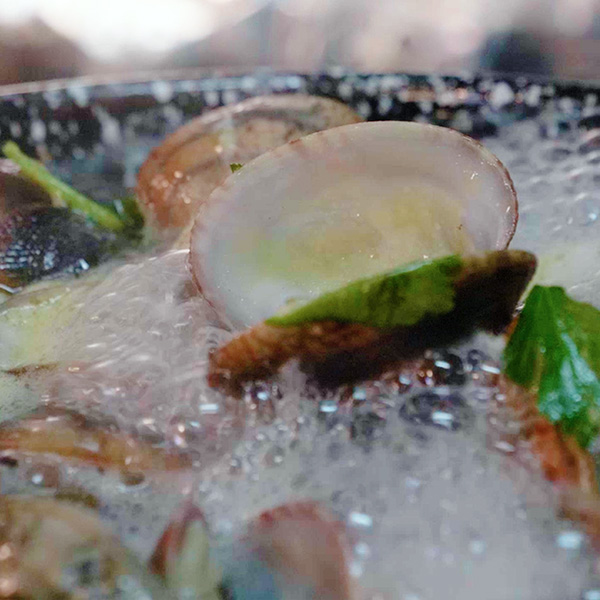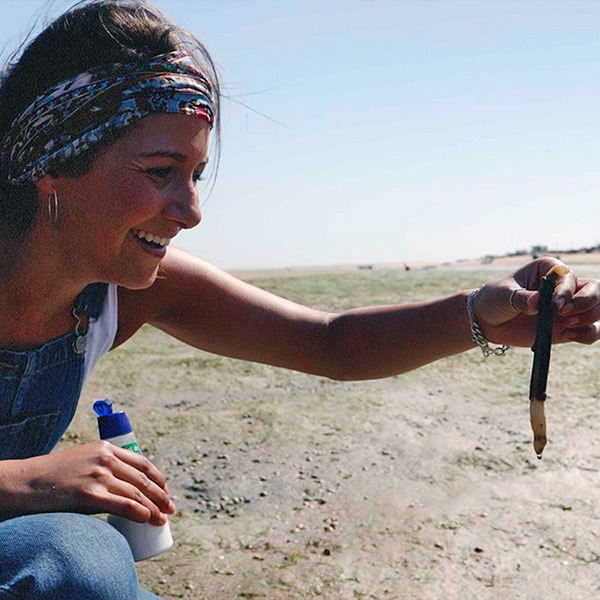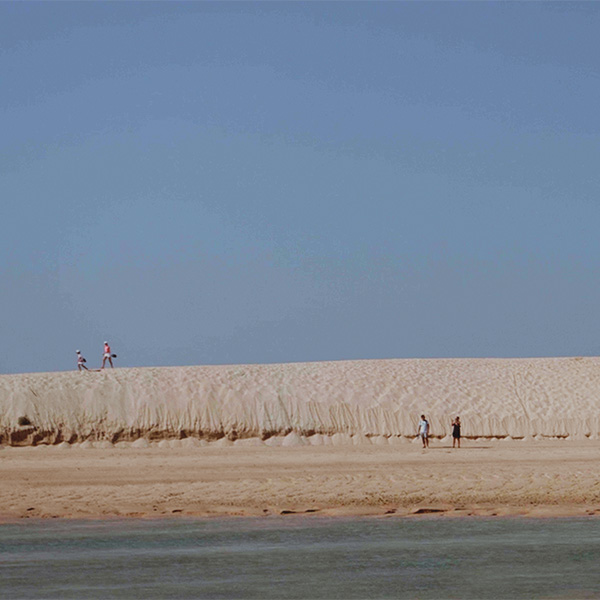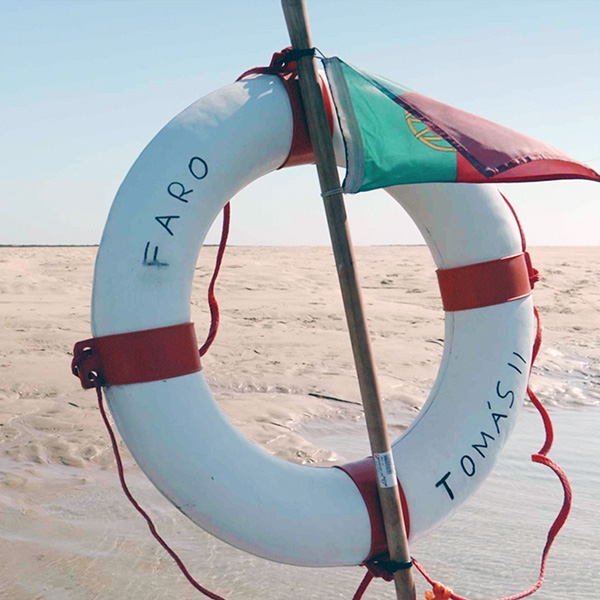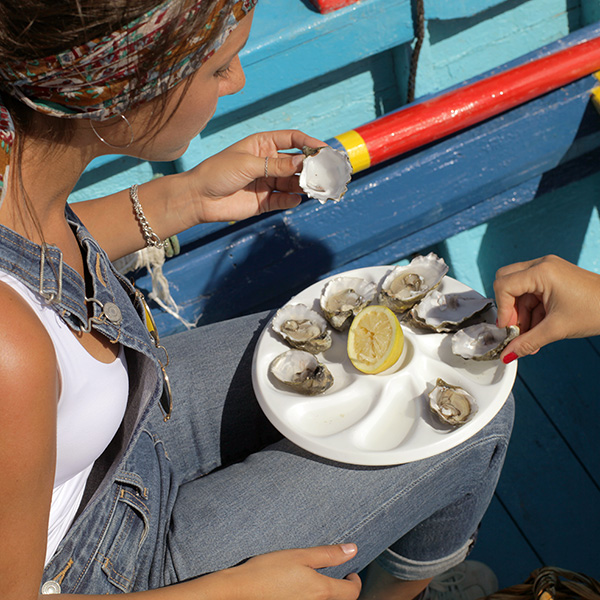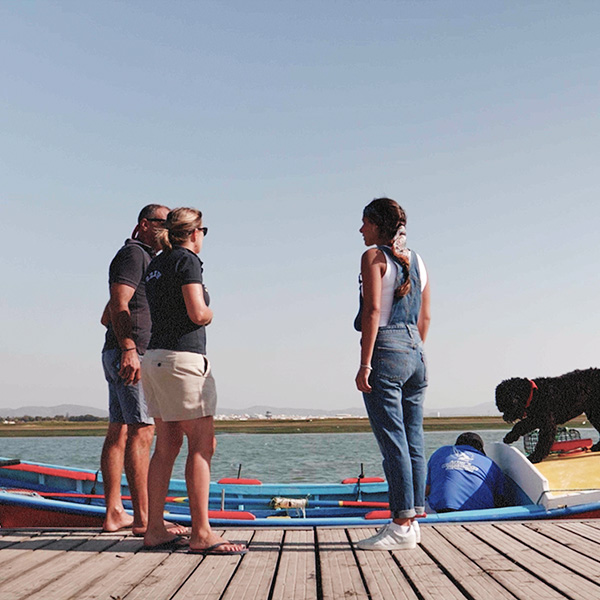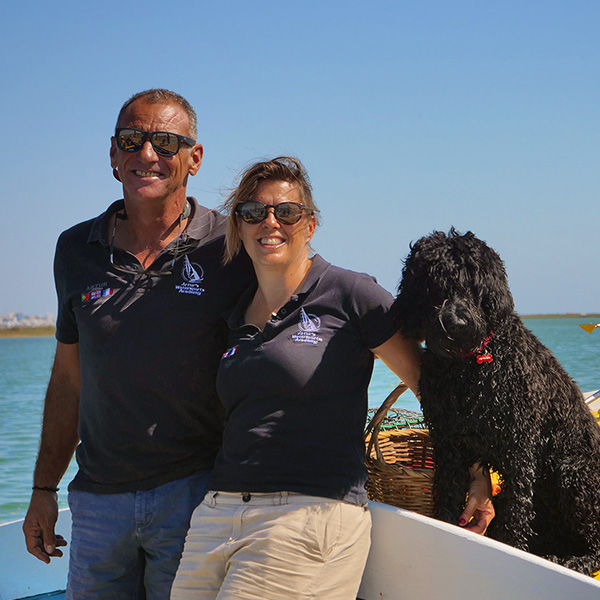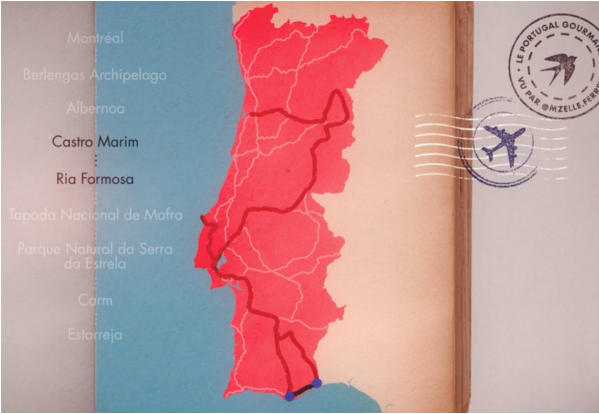
We had set up an appointment with Cristina at 9 o’clock sharp at the ferry dock connecting Faro Beach to the city. Cristina is the owner of the company Portugal No Limits that offers customized guided tours. She arrived on a boat with a big smile on her face, accompanied by Artur, her life and business partner, and Nina, an adorable Portuguese water puppy.
Our tour began right when the sea was receding from the 60 kms long littoral of Ria Formosa, a space protected for its exceptional fauna and flora. Before the motor had even started, Cristina started telling us about her special bond with that area, where she used to collect clams and razor clams with her grandpa as a kid. According to her, only two things have changed since that time: the lagoon became a protected area where fishing and seafood harvesting are controlled, and oyster farms were created.
The lagoon is being studied by many biologists because its geographical location makes it a suitable environment for marine species to grow. The back-and-forth motion of the tide inside the lagoon allows for the ground to have a high level of oxygen, which stimulates the growth of an already diversified ecosystem. This environment allows for the oysters to grow-out quickly and for other mollusks living under the sand, such as clams and razor clams, to proliferate.
We then got to put theory into practice and Cristina had anticipated everything. I swapped my sneakers for water shoes, grabbed a wicker basket and other accessories and followed my guide outside of the boat. Luckily, Nina was here to watch the boat, true to the tradition. It is with a paint scraper-like tool that I started digging the humid sand, following my teacher’s instructions. To my surprise, I realized that the clams were located less than 5 centimetres below surface level and that I was better than I thought at fishing them! As soon as I was catching some, Cristina was quick to place them in the basket in order to rinse them in the salty water inside it.
A few steps further, Artur beckoned to me and showed me holes shaped like triangles that the razor clams had dug in the sand dune. He took a salt-cellar out of his pocket and poured some into the holes. He explained that razor-clams do not tolerate salt, so this is the best technique to make them come out without touching the surrounding sand. That technique is less aggressive than the one using a harpoon. We were crouching there, silently looking at that tiny hole and every bubble that was popping out of it amazed us as it made us aware of the life living underneath. Suddenly we saw something looking like a larva coming out, but it was actually the respiratory system of the razor-clam, which followed few seconds after. I didn’t have much time to drag it out of its hole so I pulled vigorously to counter the suction effect of the muscle inside the shell, that was hanging the razor-clam onto its tunnel. These are tenacious animals!
What an experience it was to enjoy freshly caught oysters at room temperature, when we usually eat them really cold. They were amazingly fleshy and delicious. I believe that they were the best oysters I got to eat to this day, but my taste buds were probably strongly influenced by the surrounding frame! 😉
I’ll remember this day filled with sun, laughs, surprises, races with Nina the puppy, an extraordinary tasting and I’ll mainly remember my encounter with this inspirational entrepreneurial couple who passed on their love of Ria Formosa in only a few hours. Can we please go back ?
